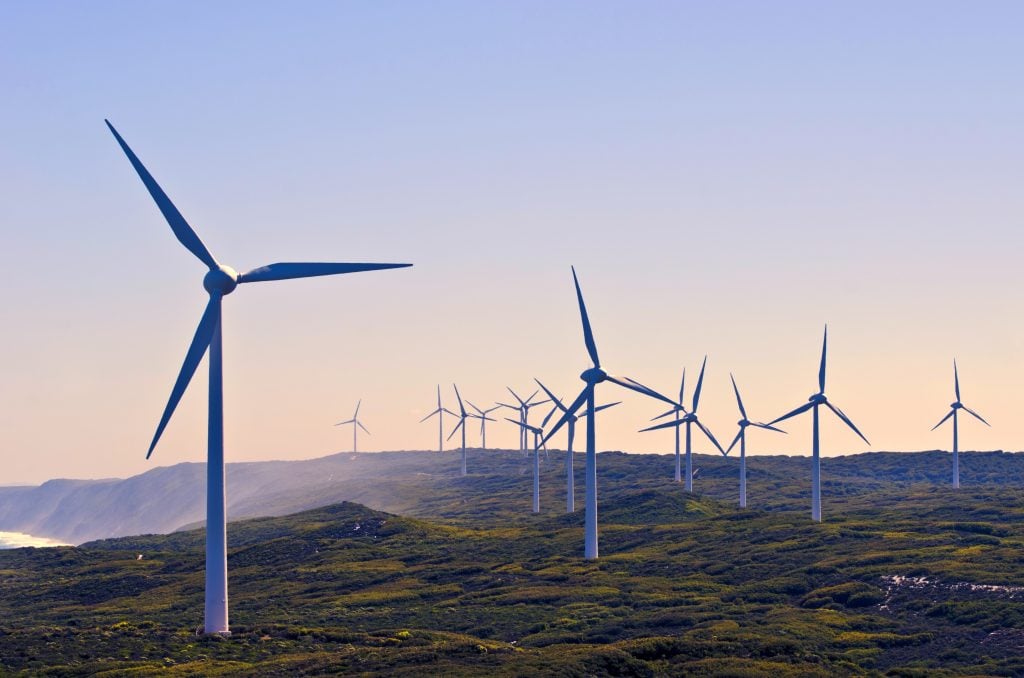Natural wind power has been used throughout history due to its many advantages, which include abundance, affordability, and environmental friendliness. However, despite the positive impacts, wind energy projects often face opposition from local communities, particularly due to issues such as noise and visual impact.
In recent years, opposition to wind power has grown stronger, despite, or perhaps because of, the need to accelerate wind energy growth to meet renewable energy targets. The cause of this opposition is often rooted in concerns about what renewable infrastructure will do to property values, the environment, and local economies, as well as worries around health and wellbeing.
By initiating conversations early in the project lifecycle and maintaining them throughout, developers can ensure that community concerns are addressed, benefits are clearly communicated, and local support is secured.
Robbie Breschkin, Director at TBH and renewable energy specialist, recognises that while wind energy offers significant benefits, it can also raise concerns among local communities. Drawing on his own experience in the renewable energy sector, Breschkin highlights several key community concerns and effective strategies to address them:
Why Wind Energy is a Game Changer
According to the International Renewable Energy Agency over 898 gigawatts (GW) of wind power capacity has been installed worldwide as of 2022, meeting more than 6% of global electricity demand. This represents incredible growth in just a short time, considering the first modern wind turbines only began operation in the 1980s.
But what is all the fuss really about?
Wind energy is now less expensive to produce than all other forms of energy. The more we use wind energy, the more we save and benefit from it. Wind is also an inexhaustible resource, ensuring that our limited supplies of finite energy sources like gas and coal last longer.
Large-scale wind farms also require far less land than coal mines, oil fields and even equivalent solar farms per unit of energy produced. This reduces siting conflicts and environmental impacts, making wind energy a more sustainable option.
Economic Concerns
When I hear concerns about the cost of renewable energy, I think about where they are coming from, and who might benefit from them being spread and why. Especially right now as we near upcoming federal elections in Australia.
Historically, opponents of renewable energy have resisted advancement by arguing that the transition was too expensive and required large government subsidies to succeed.
While this was true in the past, the cost dynamics of renewable energy – in particular, wind –have shifted dramatically in the last century, with the biggest swing occurring around a decade ago when the costs of wind and utility-scale solar energy dropped by 40% making them cost-competitive or cheaper than fossil fuels in many markets.
The International Renewable Energy Agency found that wind and solar saved $810 billion globally in electricity costs in 2022 alone. These savings are not only the result of lower operational costs of renewables but also due to the avoidance of higher costs associated with fossil fuel-based electricity generation.
This is because though upfront capacity costs might be relatively high for wind, power operational costs are extremely low since no fuels are required.
For landowners, since turbines, access roads, transformers, and other infrastructure only require a small percentage of the site, most wind farms don’t require purchased property. As a result, investors pay lease payments to landowners which can result in a great deal for the farmer since the land will bring in income while still being used for agricultural purposes.
Job creation
The 2024 Infrastructure Department’s State of the Regions report indicates that the renewable energy sector is creating more jobs than are being lost in fossil fuel industries, and overall job growth from the “net zero transformation” is likely to be stronger in regional Australia. Around 70% of renewable energy jobs are expected to be in rural and regional areas up to 2035.
These jobs will contribute to rural economic development and provide new job opportunities to regional communities.
The wind energy sector also benefits from ongoing government support. In this regard, favourable policies, subsidies, and incentives have been created to promote and sustain the development of wind energy projects in the future such as accelerated depreciation for eligible assets.
The government has also committed $91 million to boost training and apprenticeships in clean energy sectors, including wind energy.
NIMBYism and Community Involvement
One of the primary concerns for communities near wind farms is the potential impact on property values.
A fear of decreased property values can lead to fierce opposition of new projects and (NIMBY) “Not in My Backyard” concerns. One way to address NIMBY concerns is to show communities how wind farms can contribute to local and national economies.
While some studies do suggest that property prices can decrease in the short term after the announcement of a new wind energy development, prices often return to past levels 3-5 years after wind farm operations begin.
Wind farm development is able to stimulate local businesses, such as hotels and restaurants, due to increased activity during the construction phase, further boosting local economies. Wind farms also generate employment opportunities not only directly associated with wind energy, but also indirectly through their supply chain, while their energy benefits touch a wide variety of industries, such as manufacturing, transportation, and construction.
Lastly, because wind turbines require relatively small amounts of land to operate, landowners can continue using farmland for agriculture or grazing while also receiving land lease payments.
The Eyesore Earsore Effect
Using the argument that unsightly and noisy wind turbines should not be allowed in natural landscapes, many Nimbyists believe that wind turbines are an eyesore and degrade the natural beauty of rural areas and scenic landscapes.
The flickering shadows generated by the turbines — a phenomenon referred to as “shadow flicker” is a common concern that goes beyond aesthetics for some individuals. Shadow flicker occurs when the sun passes between the rotating blades of a wind turbine and is especially noticeable inside buildings where the strobe like light appears through windows.
Some community members have reported that shadow flicker causes agitation, seizures, and chronic headaches. However, the Australian National Health and Medical Research Council report has found no consistent evidence that wind farms cause adverse health effects in humans. This conclusion is supported by multiple scientific studies and reviews from various health and research organisations worldwide.
A study from the Lawrence Berkeley National Laboratory on the connection between shadow flicker exposure and stress levels found that symptoms were instead closely linked to the sufferer’s perception of the “fairness and process” of the local wind project’s implementation rather than the shadow flicker phenomena itself. In other words, “feeling uninvolved” in the decision to implement wind in the community contributed more to subjective responses to shadow flicker than actual physical exposure.
Wind turbines produce several types of noise, including mechanical noise from internal machinery like gearboxes and generators, aerodynamic noise from blade movement (swishing or whooshing sounds), and low-frequency noise and infrasound.
Multiple scientific studies have found no direct causal link between wind turbine infrasound and adverse health effects.
A scientific study by the Association of Australian Acoustical Consultants found that infrasound levels from turbines are usually lower, and definitely no higher, than what we are regularly exposed to in our natural environment and even from our own bodies.
More recently, a 2023 study by the Woolcock Institute of Medical Research exposed 37 healthy “noise sensitive” adults to simulated wind turbine infrasound in controlled conditions and found “no evidence” that 72 hours of exposure caused any adverse physiological or psychological effects.
What About the Whales?
Offshore wind farms have received considerable negative publicity about how they impact marine life – in particular, whales. However, some of the most publicised claims have been unfounded or deliberately misleading.
In 2023, politicians and conservative groups attributed a spike in whale deaths off the coast of New York and New Jersey to two offshore wind developments. However, peer-reviewed scientific evidence provided by The National Oceanic and Atmospheric Administration (NOAA), and other esteemed marine biologists debunked this story – and showed increased ship traffic collisions and entanglements with fishing gear were the primary causes of these deaths.
Closer to home, the editor of well-respected scientific journal Marine Policy called out a fake study cited by Facebook community group ‘No Offshore Wind Farm’ that claimed wind farms could kill 400 whales per year in Australia. The editor concluded that the alleged article “does not exist… We never received this imaginary paper… I am seeing no evidence that the study ever took place.”
Disinformation campaigns concerning whales are often fuelled by those with conflicting or vested interests to undermine the wind industry and possibly divert attention from other real dangers facing marine life (such as ship strike, overfishing, pollution and offshore seismic blasting). An estimated 20,000 whales are killed annually worldwide due to collisions with shipping vessels.
Ironically offshore wind farms (OWFs) can actually help to conserve marine life because they can serve as artificial reefs, providing new habitats for marine life such as algae, mussels, barnacles, sea urchins, starfish, and tubeworms. When these species colonise the complex hard substrate habitat, it can lead to increased biodiversity in the area. Additionally, the exclusion of fishing activities around OWFs also creates a de facto protected marine area, allowing marine animal populations to thrive and potentially spill over to adjacent areas.
Mitigating Wildlife and Biodiversity Impact
Environmental concerns often top the list of local concerns about wind farm development, with the main worries being wildlife impacts, habitat loss and fragmentation, noise pollution, and land use. Understanding these valid concerns and evaluating the pros and cons of wind turbines compared to conventional energy generation can help with overcoming community opposition.
Although wind turbines can and do unintentionally hurt flying wildlife populations because of collisions and habitat displacement, researchers are actively working on strategies that can be incorporated into planning, policy, and project processes to reduce impacts.
For example, careful planning and siting can mitigate many of the environmental dangers of wind turbines.
Just placing turbines away from major migration routes can reduce negative effects on flying animal populations. Painting turbines and lessening operation during periods of high activity can also significantly reduce mortality rates.
While wind turbines do cause wildlife deaths, their impact is significantly lower compared to other human-made structures and activities. For example, buildings and cats kill far more birds annually than wind turbines.
While wind turbines produce no direct carbon emissions or pollutants during operation, gas and coal plants are sources of air pollutants, including coal ash, which contains toxic elements like selenium that have profound environmental and health impacts. Selenium toxicity has been shown to cause birds to be born with underdeveloped bodies, organs, or other fatal conditions that get passed down and can affect descendants for many generations.
Land Requirements for Renewable Energy
Oil and gas development globally has consumed approximately 30,000 square kilometers of land – an area equivalent to three Yellowstone National Parks. This extensive land use includes drilling sites, pipelines, refineries, and associated infrastructure, which can lead to significant environmental degradation and habitat fragmentation
Compared to traditional power plants or large hydroelectric dams, wind farms have a smaller footprint, using very little land to operate compared to the amount of energy they produce. In fact, only about 1% of the land wind farms use is taken out of production. This means the rest of the land can be left in its natural state or used for other purposes like conservation or agriculture.
Some wind farm sites have contributed to biodiversity by providing new habitats or changing existing ones due to an ecological phenomenon that occurs when changes in the population of top predators lead to significant alterations in the populations of prey and primary producers. For example, in the Western Ghats of India, the placement of wind turbines has changed predatory birds’ feeding activity, which positively increased the number of fan-throated lizards living in the area.
Unlike conventional energy operations that often require extensive networks of roads, pipelines, and other infrastructure, wind farms are unlikely to contribute to habitat fragmentation, a problem that can impact wildlife significantly. Research from the Australian National University found that Australia would need only about 1,200 square kilometers of land to fully transition to renewable energy, which is a negligible amount compared to other forms of energy.
Engaging the Community
For wind farms to succeed, community acceptance is not just important, it is essential. The best way to ensure acceptance is often just to be as transparent as possible during communications with everyone involved.
Interactive maps, online surveys, and virtual consultations are other helpful tools for sharing feedback and suggestions regarding new wind projects to the wider community. These tools make it easy for community members to better visualise project impacts, voice concerns, and contribute to decision-making processes. This results in more democratic and accepted outcomes for all stakeholders involved.
I have seen projects working with the local landowners to refine the windfarm layouts, including relocations or removal of specific turbine to balance the generation potential with the impact to the landowners. Projects like these, that have been willing to compromise, have seen reduced pre-construction timeframes.
Sentiment Tracking and Immersive Visualisation
Transparent communication strategies can include the sharing of technical assessments on expected noise levels, visual simulations showing turbine aesthetics and visibility, and environmental studies examining wildlife habitats and migration pathways so that everyone knows exactly what can be expected. These tools help fight disinformation campaigns shared elsewhere too.
Human sentiment, correlation analysis, and research data can be helpful to assess public perspectives on wind energy use and potential. These tools enable transparent and inclusive communication, allowing community members to visualise project impacts, voice concerns, and contribute to decision-making processes, resulting in more democratic and accepted outcomes for all stakeholders involved.
Solar Pulse, an Artificial Intelligence (AI) sentiment tool is currently being used to gauge community support for solar energy projects. The technology tracks online discussions, news articles, and social media posts to gain a better understanding of local sentiment to help with reputation management and crisis response.
Immersive visualisation (IV) is another digital tool that can be used to help communities understand the potential impacts of a wind farm in their neighborhood tangibly. By simulating and visualising wind flow from turbines, IV tools can give communities an understanding of how wind and noise will interact with local buildings and spaces so that they can fully understand proposed developments and benefits. This approach was used successfully in the King Island Project to gain community buy-in.
The Role of Governments
Policy plays an important role in the community buy-in of wind energy projects – with examples from Denmark and Scotland showing how policy can lead to high levels of public acceptance and support for wind energy initiatives.
In Europe a significant portion of Denmark’s wind capacity is owned by local citizens through various ownership models. This is because in 2011, the Danish government mandated that new wind farms must be at least 20% community owned. This policy ensures that residents have a financial stake in the projects, which helps to garner support. Community involvement and engagement from the planning stages through to operation has been a key factor in Denmark’s success in wind energy deployment.
In Scotland, wind farm developers are encouraged to establish community benefit funds that provide financial resources for local projects and initiatives. This means that the economic benefits of wind energy developments are shared with the communities hosting the turbines – so everyone feels invested in their success.
Summing Up
Building trust and collaboration between developers and community members is a process that takes time and careful planning, but successful wind farm developments from around the globe have shown us that public acceptance and support for wind energy initiatives can be achieved.
European countries such as Denmark, Germany and Spain began developing wind energy much earlier than Australia, despite having higher population densities and less available land. Careful community engagement strategies and government policies have contributed to a higher acceptance and positive perceptions of wind energy in those countries.
Unlike finite fossil fuels, renewable wind energy is inexhaustible, providing a more sustainable long-term energy solution that holds the potential for a more resilient, sustainable planet. Shifting Australia to clean energy can help mitigate the worst impacts of climate change for future generations. At TBH, we are inspired by this challenge and look forward to being a part of the transition.
About Robbie Breschkin

Robbie is an experienced project management professional with expertise in a wide range of critical areas. His skills encompass Project Planning, Scheduling, Earned Value Analysis, Workshop Facilitation, Cost and Schedule Risk Analysis, and Claims and Dispute Resolution. With advanced knowledge of industry-standard tools like Primavera P6, Microsoft Project, PowerBI, Visio, and Excel, Robbie brings a technical edge to renewable energy project management.


